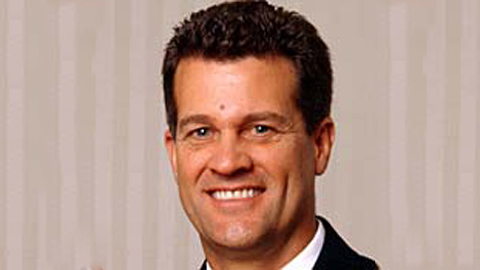Cushman & Wakefield Takes Historic Leap Forward
The new era for Cushman & Wakefield has begun, with the completion of its merger with DTZ. The new Cushman & Wakefield is now one of the largest commercial real estate services firms in the world with more than $5 billion in revenue and 4.3 million square feet under management.
By Gail Kalinoski, Contributing Editor
The new era for Cushman & Wakefield has begun with the completion of its merger with DTZ, making it one of the largest commercial real estate services firms in the world with a combined total of $5 billion in revenue and more than 4.3 billion square feet under management.
The merger, announced in early May, creates the second largest real estate services firm behind CBRE and ahead of JLL with about 43,000 employees and $191 billion in transaction value.
Cushman & Wakefield is being led by Chairman & CEO Brett White, a former CBRE CEO, and Global President Tod Lickerman, who had been the global CEO of DTZ. The combined company is majority owned by an investor group led by TPG, PAG Asia Capital and the Ontario Teachers’ Pension Plan. It is the same investment group that bought DTZ from Australia-based UGL Ltd., for $1.14 billion in November 2014 and soon after acquired Cassidy Turley and rebranded it as DTZ.
The moves made by Cushman & Wakefield, DTZ and the investment group are emblematic of the consolidation that has been shaking up the CRE world for the last several years, particularly as more multinational clients seek to get their services from one large firm rather than multiple companies.
“The goal appears to be the creation of mega international real estate providers that can be one-stop shops to their clients,” Jahn Brodwin, senior managing director of FTI Real Estate Solutions, told Commercial Property Executive in the spring when reports surfaced that DTZ was looking to acquire Cushman & Wakefield for about $2 billion.
The privately-held property services firm’s owners, the Agnelli family and its investment arm, Exor SpA, had hired Goldman Sachs and Morgan Stanley earlier this year to begin seeking bids for the company. Exor and the Agnellis owned 81 percent of Cushman & Wakefield and the employees owned the rest of the firm before the sale.
White, who is an investor in the TPG consortium, acknowledged that the merger of two major real estate services firms like Cushman & Wakefield and DTZ is “a game-changing event in commercial real estate.”
Industry analysts were not surprised that White, who left CBRE in 2012, re-emerged on the scene as an investor in TPG and expected him to take a leadership role as the consortium began acquiring more companies to build out DTZ into a more global company. White had helped CBRE through several major milestones, including taking it public in 2004 and three large acquisitions – Insignia/ESG Inc., in 2003, Trammel Crow Co. in 2006 and ING REIM in 2011. Now he is helping the TPG investment group grow the new Cushman & Wakefield as well.
“Both legacy firms had been aggressively growing their respective platforms and deepening their reach into the market with new acquisitions and talent,” White said in a prepared statement. “Now we have the opportunity to see these ambitions come together – capturing the momentum in the market and clearly claiming our position at the top of the industry.”
In his statement, Lickerman suggested the industry should expect more activity from Cushman & Wakefield.
“The completion of the merger is a historic leap forward, but it isn’t the end of our journey,” he said in his prepared statement. “Today is an important milestone that propels us into a future rich with opportunity for our clients, our people, and our company.”
David Bonderman, TPG founding partner, was even more blunt.
“The formation of the new Cushman & Wakefield is the next chapter in the most exciting growth story in the real estate industry,” he said in a prepared statement. “TPG is excited to partner with Brett and his management team as they continue to grow the business.”
Former president & CEO Edward Forst is no longer with the company.
Global executives include John Santora, Global COO and Chief Integration Officer, and Duncan Palmer, Global Chief Financial Officer.
Service line leaders are: Steve Quick, Chief Executive, Global Occupier Services/Americas Leader; John Busi, President, Valuation & Advisory, Americas & Global Practice Lead; Paul Bedborough, President, C&W Services, and Chris Cooper, Chief Executive, DTZ Investors.
Other top executives include: Carlo Barel di Sant’Albano, Chairman, EMEA and Chief Executive, Global Capital Markets & Investor Services; John Forrester, Chief Executive, EMEA; Edward Cheung, Chairman, APAC Board & Chief Executive Greater China, and Stuart Roberts, Chief Executive, APAC.
Joe Stettinius, the former Cassidy Turley president & CEO who became Chief Executive of DTZ’s Americas region in January, is now Chief Executive, Americas, for Cushman & Wakefield.
There are four Region Presidents who will report to Stettinius: Ron Lo Russo, Tri-State Region President/NY City Region Market Lead; Shawn Mobley, East Region President/North Central and Southeast Region Market Lead/Chicago Market Lead; Celina Antunes, South America Region President and Mike Smith, West Region President/Texas Region Market Lead.
Seven Region Market Leads will also report to Stettinius. They are: Luis Alvarado, Northeast Region Market Lead/Boston Market Lead; Dan Broderick, Southwest Region Market Lead/San Diego Market Lead; Jim Fagan, Connecticut Region Market Lead/Stamford and Westchester Market Lead; Mike Kamm, Northwest Region Market Lead; Victor Lachica, Mexico Region Market Lead; Roberta Liss, Mid-Atlantic Region Market Lead/DC Metro Market Lead and Dean Mueller, South Central Region Market Lead.
“We’ve drawn from the legacy firms and from the industry to put in place the best talent and best leadership possible,” Stettinius said in a prepared statement. “We have the right platform and right people sharing our client-centric culture and a strong desire to aggressively grow our business in the Americas.”
The company also unveiled a new logo that it said is “reflecting the legacy of a trusted global brand, drawing on a wider history and positioning the firm for the future.”









You must be logged in to post a comment.